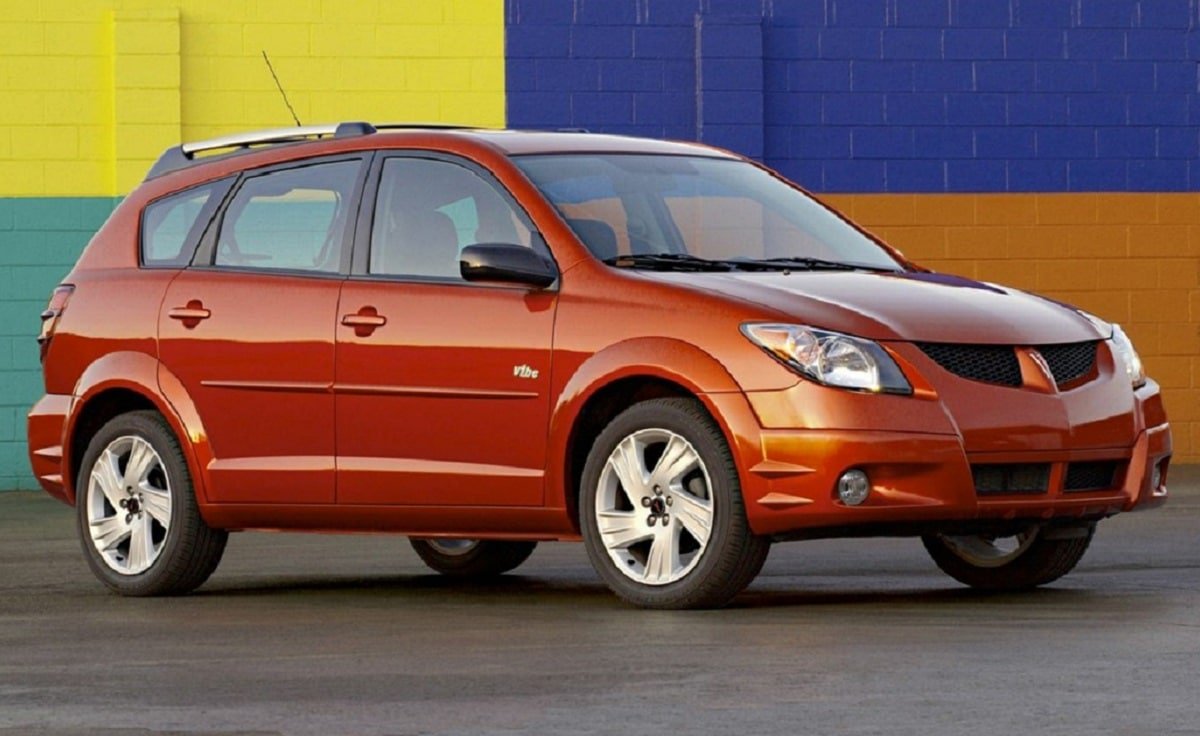

- #2004 pontiac vibe manual transmission problems drivers#
- #2004 pontiac vibe manual transmission problems full#
A known problem could see unwanted debris clogging up an internal mechanism, which can result in unwanted harshness during shifts. On a test-drive, note the shift quality of the automatic transmission, particularly from first to second gear. If you find any of the above, use it to your advantage when hammering out a final price. Other minor grumbles concerned rear-seat comfort levels and quick wear of the factory installed tires.īe sure to give the paint a good inspection if you're considering a Vibe, a it's prone to premature flaking, peeling, oxidization and chipping, even on a fairly new model.
#2004 pontiac vibe manual transmission problems drivers#
Most drivers talk highly about the five-speed manual gearbox and its shift feel- though plenty wish their machines had more get-up-and-go. Many wish for a better factory-issue cargo cover, saying the one included with the car is ineffective and awkward to use. Things could be worse when it comes to owner complaints. One owner noted that his elderly mother could get in and out with ease, thanks to big door openings and an ideal step-in height.

Low maintenance and fuel costs are also reported by most drivers who share their experiences on the web. Owners online say that they love the styling, space, access, and driving dynamics of their cars- rating these aspects most highly when surveyed. No problem with safety or your pocketbook either- as Vibe boasted appreciable crash test scores and impressive highway mileage with the standard engine.
#2004 pontiac vibe manual transmission problems full#
You should be able to shift to the next highest gear without trouble if this is the problem.Folding rear seats, a plasticized cargo area and a full suite of dealer accessories mean you'll have no problem loading your Vibe up for any combination of passengers and gear required for the job at hand. It’s mounted to the brake pedal and designed to engage the shift lock solenoid if it detects that your brake lights aren’t working.īad Sequencers: If you’re able to shift out of a gear, but when you attempt to shift into the next sequential gear, you hear a grinding sound, chances are good that the sequencers are failing or have failed. If the pedal goes to the floor without engaging the clutch, this would the one of the primary possibilities.įailed Brake Light Switch: If you’re unable to shift out of park with an automatic transmission, the most likely culprit is the brake light switch. This is generally caused by a leak in the system (you may notice fluid on your clutch pedal).īroken Clutch Cable: If you have a cable-operated clutch, it’s possible that the cable has broken. Low Fluid in Master Cylinder: If you’re driving a stick shift and it has a hydraulic clutch, one of the first suspects is low fluid in the clutch master cylinder. However, it’s more likely that you would be able to shift, but the transmission would not move the car. This also causes immense damage to the transmission itself. If the fluid is low, there’s a chance that you won’t be able to change gears, particularly in an automatic transmission. * Low Fluid in Transmission - Both manual and automatic transmissions require fluid (different types) in order to operate. This requires a number of components not found on a manual transmission. All you have to do is press the accelerator, and the transmission will shift on its own as your speed increases. In an automatic, the transmission does all the work for you. Sequencers allow you to shift smoothly into each gear.Īdditionally, there’s the question of your master cylinder if you have a hydraulic clutch (some cars have a clutch cable, but some are hydraulic and will have a fluid-filled master cylinder and slave cylinder that must be in operation in order to shift gears, or the car will act like the clutch pedal isn’t pressed). You press the clutch pedal, which engages the clutch and stops the transmission from spinning with the engine. In a manual transmission, changing gears requires a working clutch pedal, clutch and other components. For instance, if you can’t shift out of park with an automatic transmission, chances are good that the problem lies elsewhere, perhaps with the brake light switch attached to the brake pedal. However, your problem might have nothing to do with the transmission at all. Of course, automatics are the more complicated of the two systems. Service type Not able to change gears Inspectionīoth manual and automatic transmissions are complex and require a significant number of components in order to operate.


 0 kommentar(er)
0 kommentar(er)
